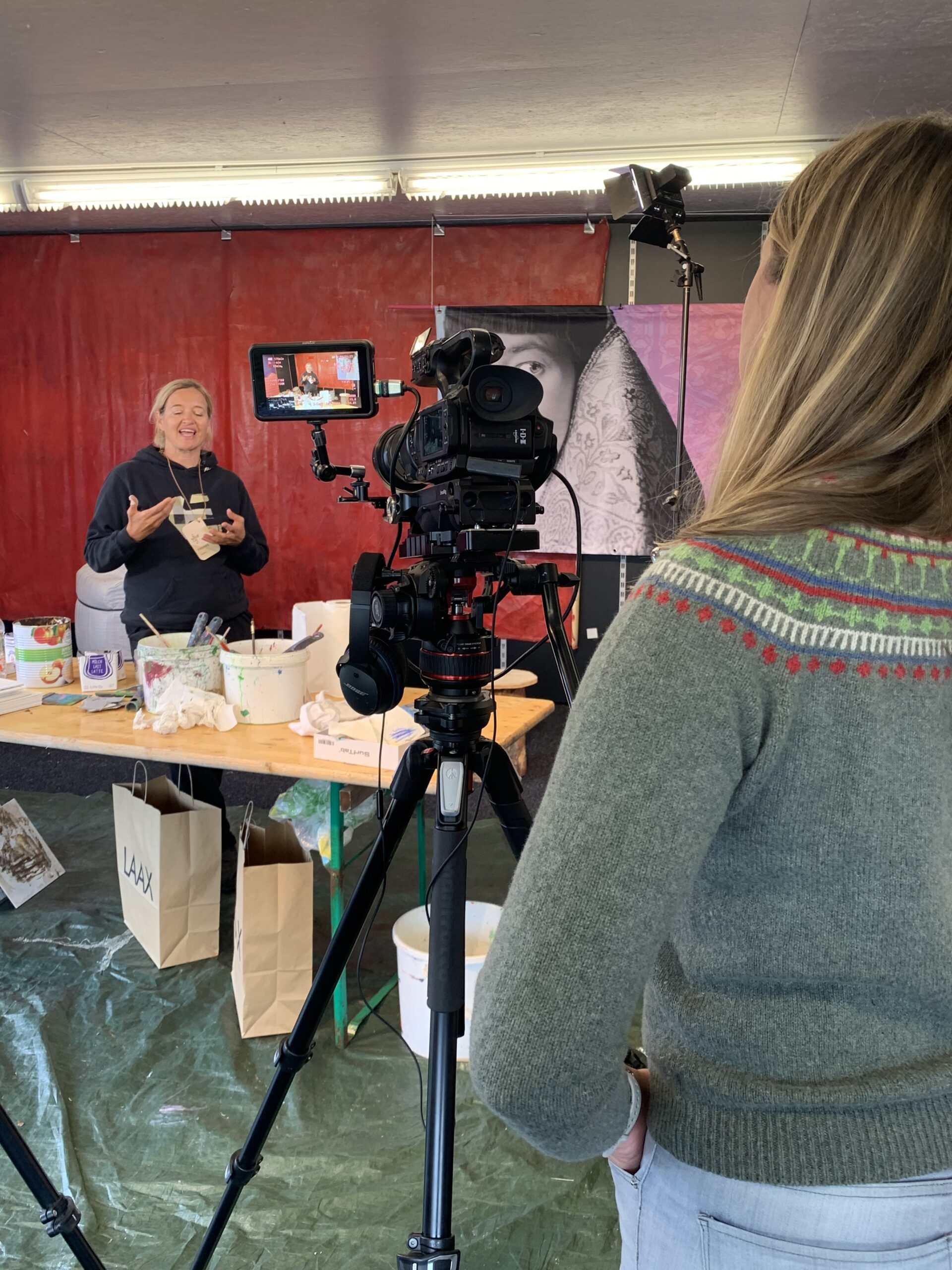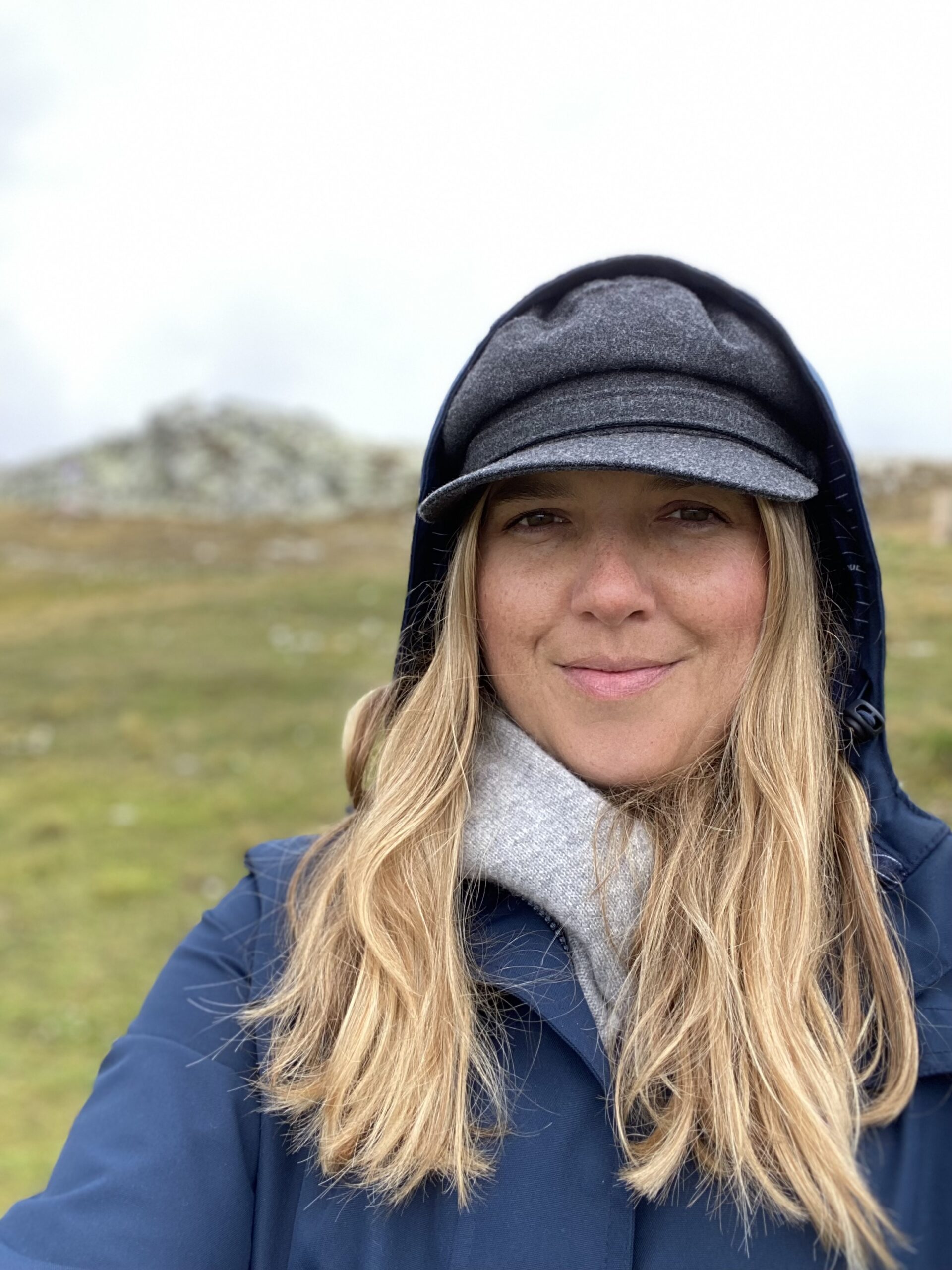Laax. A beautiful mountain resort situated in the Swiss Canton of Graubünden. Best known as a freeride snowboarder's paradise, the village was host in September 2021 to the first ever gathering of the [y]our 2040 community, a coalition of the willing focused on "the world we want to co-create." Supported by ETH Zurich, the event included participants from diverse backgrounds, all connected by a common goal and shared values. Taking the opportunity of being onsite to talk to some of them, we want to make the link with our RETHINKING LIVING campaign, a virtual red-thread we have been running since the start of the pandemic.
From Laax to Davos: Reflections on RETHINKING LIVING, Ep. 8
Episode 8: Yvonne Gienal, Artistby Viktoria Ivarsson
The Journey Begins
RETHINKING LIVING invites us to consider the grand challenges and global issues of today through the lens of the latest science and knowledge. What is life? How do we live? What are the consequences of our lifestyle choices? We asked participants in Laax to tell us what are the questions that keep them up at night, and how they see the future evolving. This video series distills their reflections, to help us think about what could, and what should come next. ETH Zurich will take up these questions in its RETHINKING LIVING Pavilion, a space designed to promote dialogue and exchange with a broad audience during the World Economic Forum's Annual Meeting 2022 in Davos. Since filming, the meeting has been moved from January to May due to the pandemic.
Linking Traditions and Modernity

Photo credit: Daniel Barnbeck
Episode 8 connects us with an entirely different stakeholder group, and highlights that the concerns of the past are linked to those of the present. Artist Yvonne Gienal, who lives and works in the Laax area, points out that living together in a shared habitat in harmony with nature is an ancient theme. Using the example of the local legend of Saint Margaret, and the song associated with it, played beautifully in the spectacular outdoors of the Crap Sogn Gion mountain by fellow artist Luis Coray, she paints a picture that reminds us that we are all connected to each other and our history, as well as having a responsibility towards youth, who will take on the challenges we face in the future.
We are very excited to publish this particular clip in the local language of the region, Rumantsch or Romansh. It is one of the official languages of Switzerland along with German, French and Italian. Spoken predominantly in the canton of Graubunden, we support preserving this cultural heritage and welcome your feedback and/questions! Our credit goes to Remo Arpagaus for the translation.
For additional resources and further information, visit:
https://your2040.com
https://ethz.ch/en/the-eth-zurich/global/events/rethinking-living.htm
https://yvonne-gienal.ch
https://houseofswitzerland.org/swissstories/society/allegra-look-romansh-switzerlands-fourth-language
We are very excited to publish this particular clip in the local language of the region, Rumantsch or Romansh. It is one of the official languages of Switzerland along with German, French and Italian. Spoken predominantly in the canton of Graubunden, we support preserving this cultural heritage and welcome your feedback and/questions! Our credit goes to Remo Arpagaus for the translation.
For additional resources and further information, visit:
https://your2040.com
https://ethz.ch/en/the-eth-zurich/global/events/rethinking-living.htm
https://yvonne-gienal.ch
https://houseofswitzerland.org/swissstories/society/allegra-look-romansh-switzerlands-fourth-language
My name is Yvonne Gienal. I live and work here in this region. We are here on the mountain because we - together with Luis Coray - have realized an art project here on the Crap Sogn Gion. The project refers to the story of Saint Margaret, a very old figure, who has been sung about in this song for 500 years. So really a very traditional song about Saint Margaret.
She works on the alp for 7 summers, and in order to work there, she had to cover her chest. She was not allowed to show that she was a woman, because at that time women were not allowed to work on the alp. In the 7th year, the "paster petschen" (shepherd boy) sees her and says, "oh, this is a beautiful woman who is working here with us". And then a back-and-forth begins; among other things, she promises him 3 sheep, which can be sheared 3 times a year. But the shepherd boy denies: "I don't want that, I won't take it, I will tell it to the shepherd". Finally, in spite of everything, he tells it to the shepherd. Whereupon Margarethe sets off on her way and leaves the alp. She leaves behind dried up springs, withered meadows, crying cows. And so it goes on.
Seen in this way, Margarethe symbolizes fertility. For me, Margarethe stands for a very old theme but which is still very relevant today. It's about nature, fertility, respect for nature. It is also about living together in a habitat that has to be shared with tourism, with the animals, with all the joys that you want to have here on the mountain. It is living together and finding solutions together.
The song of the "Sontga Margriata" is a deeply rooted song. It has a melancholic sound, which seems to me like the sound of Luis' flute. It sounds like homesickness, melancholy, which fits very well with the song.
There are many visions for 2040 and there are also very many topics that are really important. What is very close to my heart is that that you also get the children on board. That you also work on these topics with them. To sensitize them to topics like recycling, nature mutual respect from an early age.
These topics are also particularly important for the inhabitants of our valleys. It seems to me extremely important that our young people can also stay here. That one can live well here, that one has good jobs in the valley. So there is also an exchange, we can't just be like a museum here. We have to live here, the economy must function, with nature. And we do this together.
She works on the alp for 7 summers, and in order to work there, she had to cover her chest. She was not allowed to show that she was a woman, because at that time women were not allowed to work on the alp. In the 7th year, the "paster petschen" (shepherd boy) sees her and says, "oh, this is a beautiful woman who is working here with us". And then a back-and-forth begins; among other things, she promises him 3 sheep, which can be sheared 3 times a year. But the shepherd boy denies: "I don't want that, I won't take it, I will tell it to the shepherd". Finally, in spite of everything, he tells it to the shepherd. Whereupon Margarethe sets off on her way and leaves the alp. She leaves behind dried up springs, withered meadows, crying cows. And so it goes on.
Seen in this way, Margarethe symbolizes fertility. For me, Margarethe stands for a very old theme but which is still very relevant today. It's about nature, fertility, respect for nature. It is also about living together in a habitat that has to be shared with tourism, with the animals, with all the joys that you want to have here on the mountain. It is living together and finding solutions together.
The song of the "Sontga Margriata" is a deeply rooted song. It has a melancholic sound, which seems to me like the sound of Luis' flute. It sounds like homesickness, melancholy, which fits very well with the song.
There are many visions for 2040 and there are also very many topics that are really important. What is very close to my heart is that that you also get the children on board. That you also work on these topics with them. To sensitize them to topics like recycling, nature mutual respect from an early age.
These topics are also particularly important for the inhabitants of our valleys. It seems to me extremely important that our young people can also stay here. That one can live well here, that one has good jobs in the valley. So there is also an exchange, we can't just be like a museum here. We have to live here, the economy must function, with nature. And we do this together.

Photo credit: Viktoria Ivarsson
About the author
Change Agent. Go-to Person. Viktoria Ivarsson is the International Relations Officer in the Office of the President of ETH Zurich, where she works on projects and events of international scope to increase the visibility of the university worldwide. She also manages the ETH Circle, an international network of alumni and friends of ETH Zurich who act as ambassadors. Formerly with EHL School of Hospitality, Hirslanden, and the World Economic Forum, Viktoria holds an MAS in Sports Administration and Technology from the Swiss Federal Institute of Technology in Lausanne (EPFL), and an MA in International Relations from the Graduate Institute of International and Development Studies (HEI). A Swiss and Swedish national, she is fluent in 4 languages, and is currently learning German. A member of Nordiska, the Nordic Rowing Association, she can be found most mornings rowing on Lake Zurich. You can follow her on Twitter at V_Ivarsson.
comment
Please activate comment.


